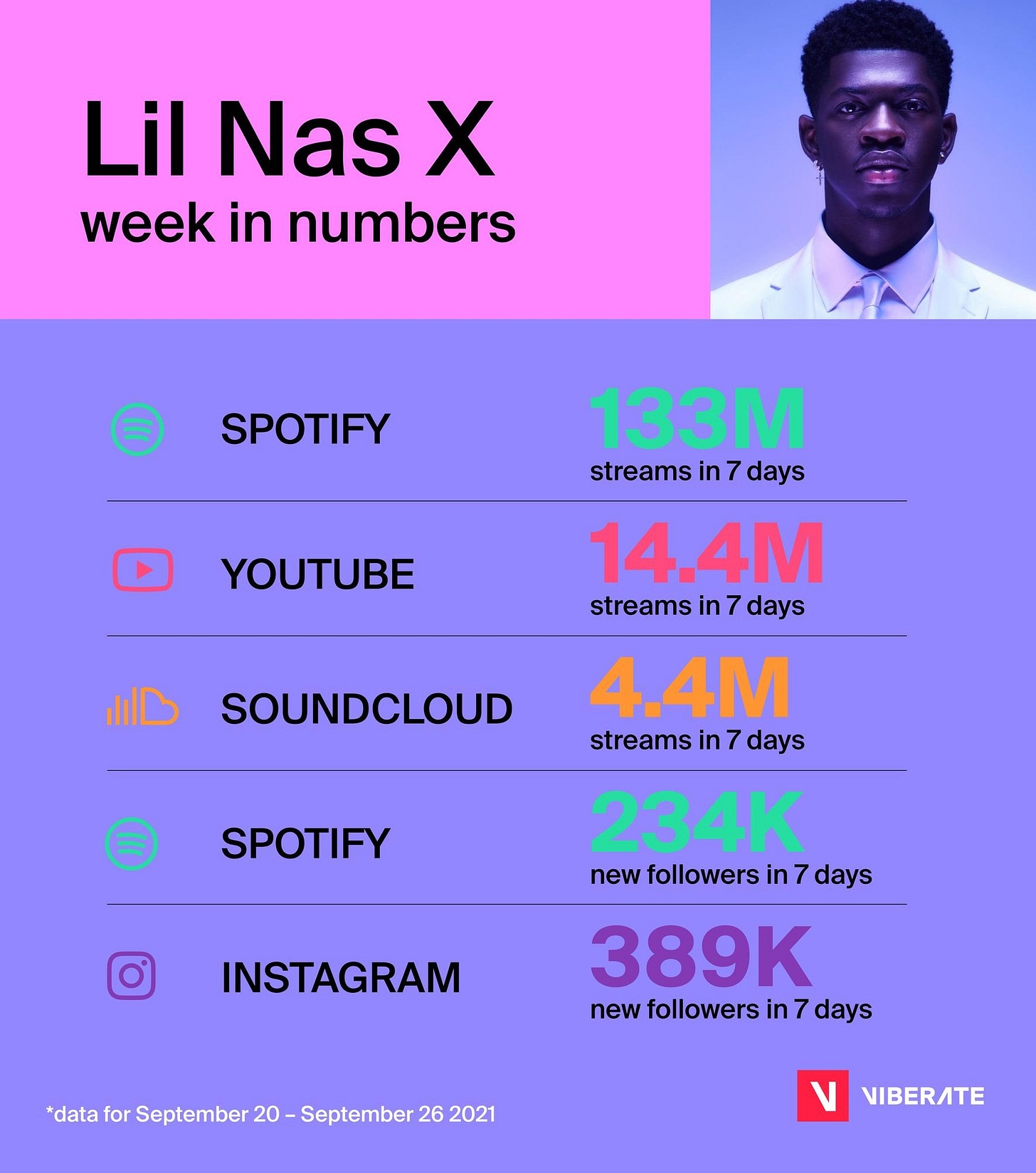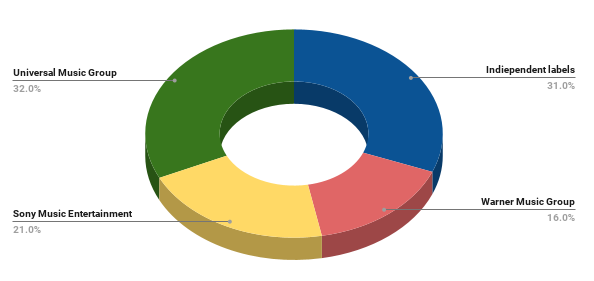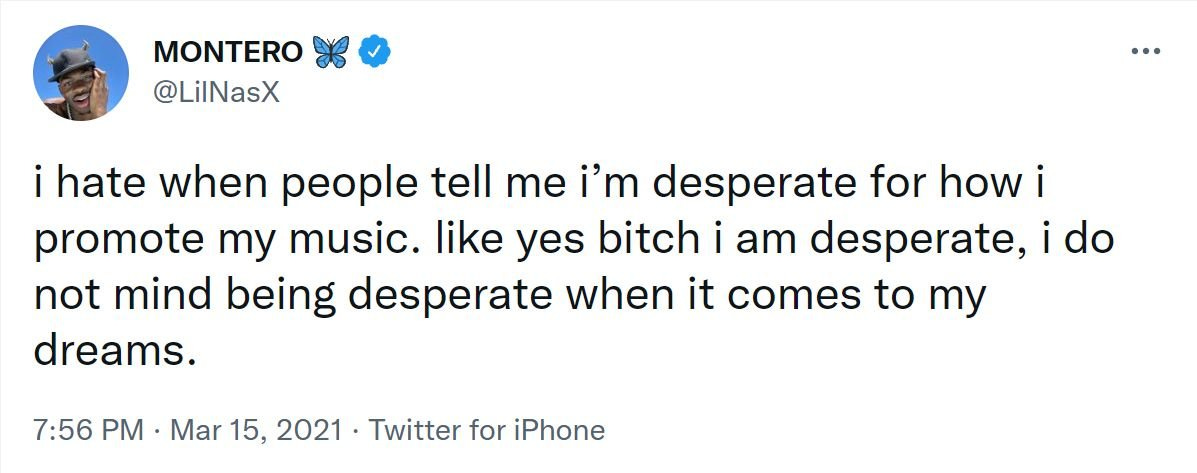Sharing The Stage: Democratisation of The Recorded Music Market
This article is the first of the 'Democratising Creativity' series that dives into how new innovations have challenged the status quo of institutional gatekeepers and democratised creative industries.
Historically, careers in the creative industries were often limited to those with specific skills, access to expensive tools, and connections to gatekeeping institutions like publishers, galleries or record labels. However, technological advancements, affordable platforms, and global connectivity in recent years has removed previous existing barriers, allowing anyone with talent and a desire to express themselves to participate in creative industries - this is no truer than in the recorded music market.
The Evolution of Power in the Recorded Music Industry: From Oligopoly to Independence
For decades, the recorded music industry was dominated by an oligopoly of three major labels—Universal Music Group, Sony Music Entertainment, and Warner Music Group. These giants dictated the market, holding the keys to artist discovery, distribution, and monetization. However, in recent years, the emergence of digital platforms, new business models, and social media has disrupted this power dynamic, empowering independent artists and labels to carve out a growing share of the market.
The Era of the Majors: An Industry of Gatekeepers
Historically, major record labels controlled the lion’s share of the music industry. In 2020, the global recorded music market generated $21.6 billion, with the majors retaining over 70% of streaming revenues. In 2012, it was reported that the "big three" major record labels controlled 88.5% of the market.
Artists signed to these labels received just 12–15% of streaming income after fees and expenses, leaving them with a fraction of the industry’s wealth. Compounding this inequality, 1% of artists under major labels accounted for 90% of the industry's total sales, underscoring how the system was skewed toward a select few.
The Rise of Independence: Disruption to Distribution
The last decade has seen a seismic shift toward independence in the music industry. Independent artists and labels, accompanied by the rise of streaming and social media, are gaining ground. By 2023, independent music—including self-releasing artists and non-major labels—generated $14.3 billion in revenue, representing 46.7% of the global recorded music market by ownership. This growth reflects how digital platforms have allowed creators to bypass traditional gatekeepers and connect directly with audiences.
Platforms like Spotify, Bandcamp, and YouTube have made it easier than ever for artists to release music without label backing, while social media platforms like TikTok and Instagram offer powerful tools for discovery and fan engagement. Independent artists can now build loyal audiences, sell merchandise, and monetize their music directly, creating new opportunities to earn without sacrificing creative control or income to intermediaries.
YouTube: A Game-Changer for Artist Discovery
YouTube was the first to revolutionize artist discovery, making it one of the most powerful platforms for launching music careers. Artists like Justin Bieber and Dua Lipa rose to fame by sharing their talent directly with audiences, bypassing traditional gatekeepers like record labels and music schools. Justin Bieber's journey from posting homemade videos as a teenager to becoming a global superstar underscores how discovery has become more democratic in the modern era. Similarly, Dua Lipa used YouTube to release her music and cultivate a dedicated fanbase, leading to her breakout success.
This shift meant aspiring artists no longer needed to attend elite music schools or rely on industry connections; platforms like YouTube offer global reach and allow talent to shine purely on merit, enabling artists from all walks of life to compete on a more level playing field.
Social Media and Direct Fan Engagement
TikTok and Instagram, in particular, have revolutionized how artists are discovered and engage with fans. On TikTok, viral music trends can propel unknown artists to global stardom almost overnight. Independent artists like Lil Nas X and PinkPantheress have leveraged TikTok's algorithm-driven discovery to build massive followings and monetize their music directly.
Instagram, with its visual storytelling capabilities, has become a platform for musicians to share behind-the-scenes content, connect with fans, and promote merchandise and live events. These platforms allow artists to own their audience relationships, providing avenues to generate income through direct-to-fan sales, crowdfunding, and tipping features like Instagram Badges and TikTok Gifts.
Lil Nas X’s campaigns mark a breakthrough in music marketing, using social media strategically to boost streaming…

From Dancing on Tiktok to Sellout Stadiums: the Case of Addison Rae
Addison Rae’s career highlights the transformative power of TikTok as a platform for democratizing the music industry and reshaping the future of artist discovery. Rae rose to fame in 2019 by posting viral dance videos on TikTok, rapidly amassing millions of followers. Her success on the app allowed her to transition from a college student to a full-time influencer and, eventually, a pop artist.
Rae strategically used TikTok to generate anticipation for her next release by teasing tracks from her EP “AR” over two years. This grassroots promotional approach paid off, as “AR” received positive reviews, proving that TikTok not only amplifies discovery but also empowers artists to refine their craft while engaging directly with fans.
Rae’s story marks a shift from platforms like YouTube to TikTok as the modern engine for artist discovery. Unlike in the past, where aspiring musicians needed access to studios or industry networks, TikTok enables anyone to showcase talent and reach a global audience with just a smartphone.
The Subscription Model and Direct Fan Monetisation: Patreon
Amanda Palmer’s journey is a great example of how the subscription model can provide artists with unparalleled creative freedom and control over their work - the most important element that labels often do not offer.
After experiencing the constraints and limited revenue streams of being signed to a label, Palmer embraced Patreon as a platform to connect directly with her fans. Through a tiered subscription system, she offers exclusive content, ensuring that supporters can access her work at affordable and transparent prices. This model not only allows Palmer to retain full creative control but also fosters a sense of community by engaging directly with her audience and valuing their feedback. Additionally, the financial independence Patreon provides enables her to reinvest earnings into collaborations with other creatives and support charitable causes, showcasing the power of this model to empower artists beyond the confines of traditional industry structures.
Challenges for Independent Artists
Despite these advancements, independent artists face significant hurdles. Oversaturation in the music space, as a result of social media, has made it harder to stand out. Critical short attention spans, exacerbated by the streaming economy, make it challenging to maintain listener engagement and subsequent long term value for the artist.
Additionally, while social media offers powerful discovery tools, algorithms can be unpredictable, and success often depends on constant content creation—a demand that can strain smaller creators. Financially, the majority of independent artists still struggle to earn a sustainable income, with 70% making less than $10,000 annually from their music. Limited access to advanced production resources, marketing budgets, and data analytics tools also puts many at a disadvantage compared to major-backed artists.
A New Era for Music
The music industry is no longer the oligopoly it once was. Independent artists and labels are growing their share of the market, capitalizing on direct-to-audience engagement and innovative digital platforms. While challenges remain, the tools and opportunities available today offer a pathway for artists to control their careers, monetize their creativity, and redefine success on their own terms.
As technology evolves and platforms mature, the next decade promises further transformation, with creators continuing to challenge the dominance of traditional industry powerhouses and forge their path in an increasingly democratized music ecosystem.









